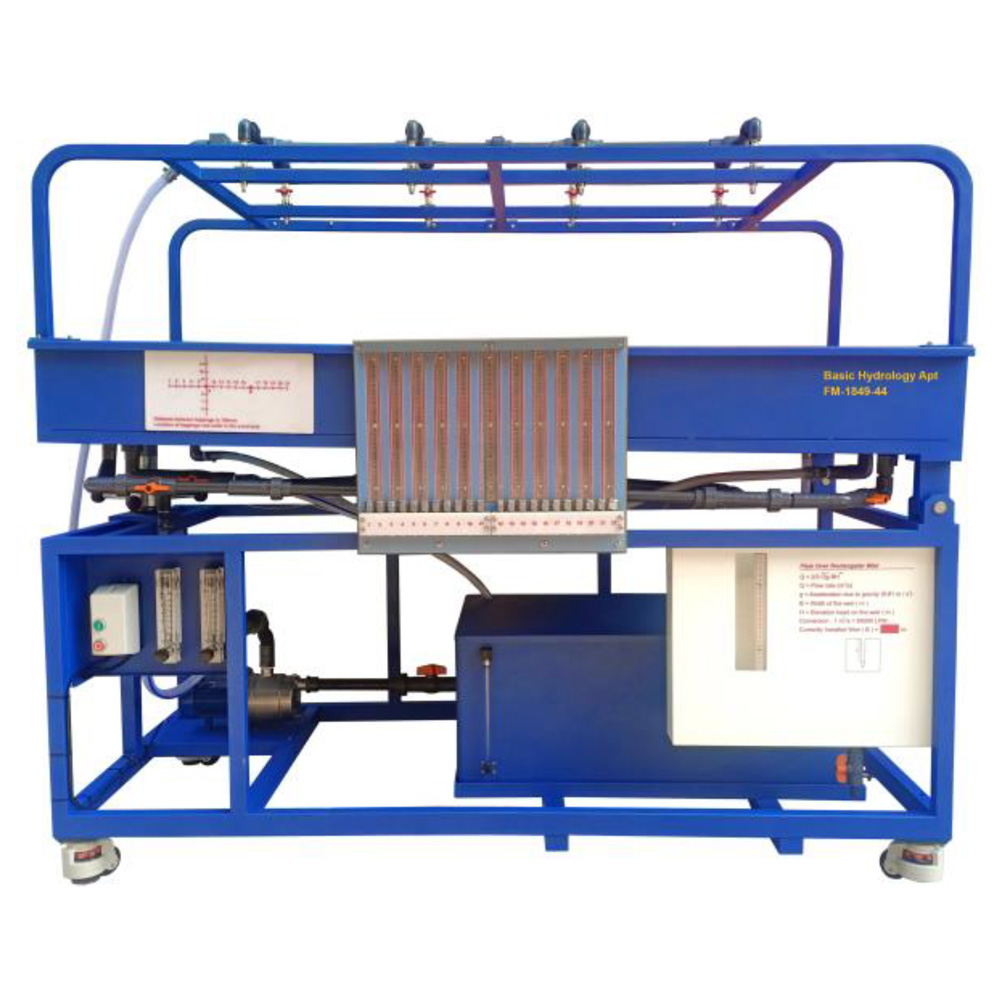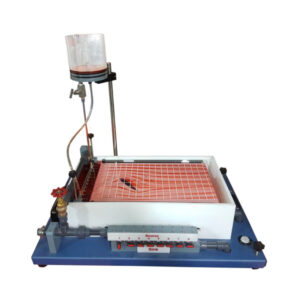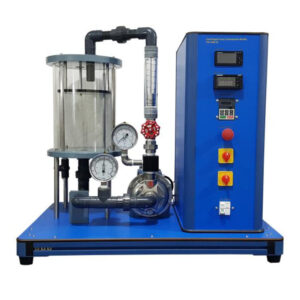In civil engineering, hydrology study system are conducted in connection with the design, construction and operation of hydraulic engineering systems and water management functions. These studies focus on topics such as seepage and flow of water in the soil and the use of groundwater resources. FM-1849-44 can be used to study seepage and groundwater flows after precipitation. Variable precipitation density and areas and different groundwater supply and drain possibilities allow a wide variety of experiments.
FM-1849-44 contains a closed water circuit with storage tank and pump. The core element is a sand-filled, stainless steel experiment tank with inclination adjustment. To study precipitation, a precipitation device is available. The precipitation device consists 8~11 nozzles. Water can flow in (groundwater) or out (drainage) via two chambers on the side. To study the lowering of groundwater, two wells with open seam tubes are available. Water supply and water drain can be opened and closed, thus allowing a wide variety of experimental conditions. At the bottom of the experiment tank there are measuring connections to detect groundwater levels, which are displayed on 21 tube manometers. The water supply is controlled by a valve and read on a flow meter. The water drain is determined by a measuring weir.




